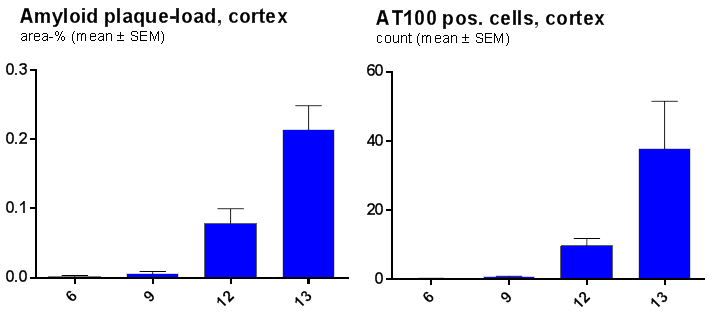The interplay of Abeta and Tau is considered detrimental if not crucial for disease etiology and progression of Alzheimer’s Disease. reMYND’s APP-london x Tau.P301L transgenic mouse model allows to assess the effects of your Alzheimer treatment on both amyloid- and tau pathology in the forebrain of the same model (Figure 1).
In the combined model, expression of the human APP-london and Tau.P301L transgenes is driven by the neuron-specific mouse Thy-1 promoter. The progressive Abeta pathology is observed in hippocampus, cortex and amygdala whereas the Tau pathology is observed in the brainstem, midbrain and at later age cortex and hippocampus. These animals exhibit first a cognitive deficit and impaired Long Term Potentiation (LTP), followed by a motor deficit allowing for a longitudinal follow-up.

Figure 1: Quantified Methoxy-X04 and AT100 staining of 6-13 month old APP-ld x Tau.P301L animals (n = 8-10 per group (6-12 mo) and n = 3 for 13 mo) in a specified area of the frontal cortex
For more information on reMYND’s transgenic mouse models or read-outs, please contact us at cro@remynd.com.













